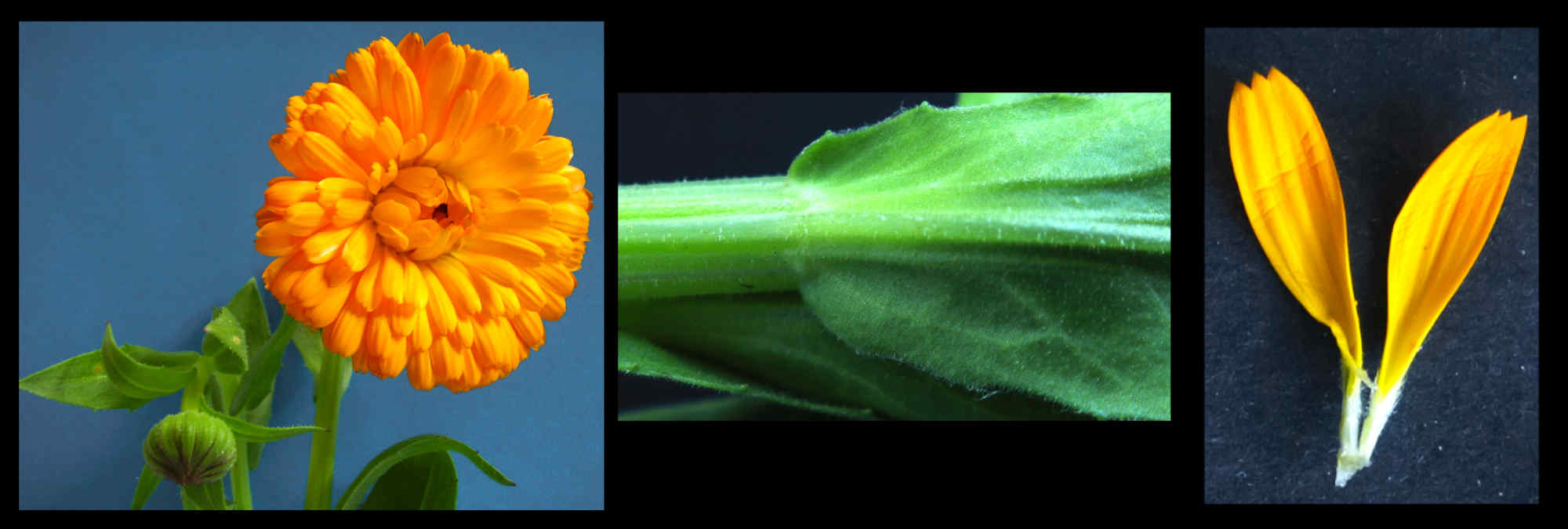Calendula.
Family Asteraceae > Subfamily Asteroideae > Tribe Calenduleae.
Tribe Calenduleae has 12 genera with around 120 species.
As well as Calendula other genera include Chrysanthemoides, Dimorphotheca and Osteospermum.
Most are herbs with alternate or opposite leaves and a head with no scales (paleae) on the receptacle.
The yellow or white female ray florets can be sterile or fertile and the disk florets are bisexual or functionally male.
The seeds have no pappus hairs.
*******************
Plants of the World Online accepts 12 Calendula species, World Flora Online 20 (excluding spelling variations)
while other sources range from 10 to 20.
They are native across a wide area from Europe to Africa and Arabia to Pakistan.
Widely naturalised around the world Flora of Australia lists C. arvensis the Field Marigold, C. officinalis the
Common Marigold and C. palaestina as naturalised here.
They share the common name of Marigold with other plants including Tagetes.
The annual or perennial herbs, with erect to prostrate stems may form dense clumps.
The simple alternate leaves, with or without a petiole are lance or spoon-shaped.
The edge may be entire or lobed.
There are 1 to 3 terminal flower heads with 2 (1 to 3) whorls of bracts in the involucre.
The flat receptacle has no paleae.
The 1 to 3 whorls of yellow or orange fertile female ray florets have a 3-lobed ligule.
The up to 150 bisexual or functionally male disk florets have a 5-lobed corolla tube.
The anther sacs have a short basal appendage.
The style has 2 very short branches and may appear to be undivided.
It has short hairs just below the top.
A characteristic feature of the genus is having 3 or 4 different types of cypselae (achenes) in each head.
Cypselae can be straight or curved almost into a circle, smooth wrinkled nodular bristly or angular
and with or without a beak or wing.
Cypselae from the inner disk florets are smaller and more incurved.
There is no pappus.
J.F.


